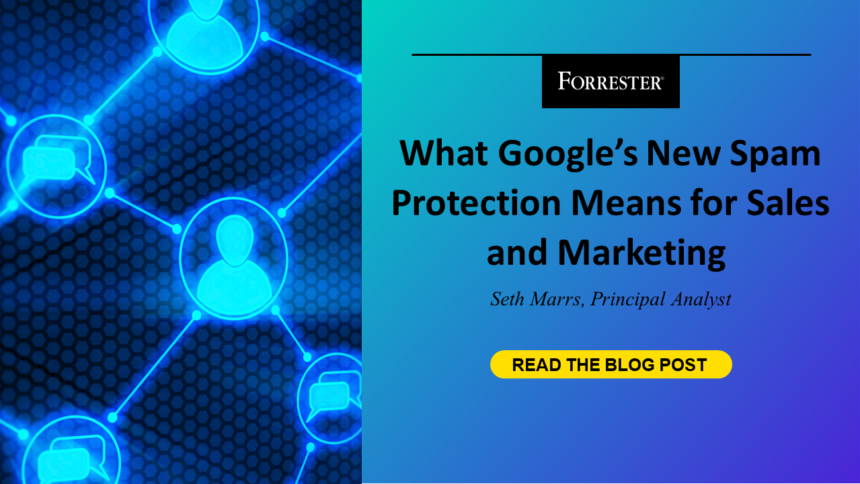In October, Google announced that it will be introducing new protections to reduce spam starting in February 2024. In the United States, as of 2023, around 60% of businesses are using Gmail as their email service provider, meaning that this change will impact most organizations. Sales engagement providers started notifying their customers, starting a debate over the impact that this will have on a company’s ability to prospect using email. After talking with many clients and sales technology providers, the goal of this blog is to provide a more detailed perspective on this change and how it might impact prospecting in the future.
Who Is Included
Anyone who sends over 5,000 emails is included. The protection encompasses the entire domain, not just those parts of the organization that are prospecting. This means that companies cannot stay below the threshold by setting prospecting limits to 5,000 per day in their sales engagement or marketing automation platforms. Unless you are a very small company, it’s likely that you are going to be included.
What Is Required If Your Company Is Included
- Set up DKIM email authentication. This is common practice for credible companies and should be pretty straightforward to put in place. If you don’t have DomainKeys Identified Mail (DKIM), your emails are likely already being sent to spam.
- Enable easy unsubscribing. Outbound prospecting technology providers already have this capability included in their systems, so if you’re using one of these systems, it’s likely that you already have this ability in-house.
- Only send wanted emails. This, defined as keeping the spam rate below 0.3%, is the biggest concern. The email authentication requirement makes this a bigger challenge, since the spam rate metric only counts emails authenticated by DKIM. Emails delivered directly to the spam folder by a filter aren’t included in the spam rate calculation. Only user-reported spam is included. Including all emails sent from a domain will be a positive, since a high percentage of nonprospecting emails will not be pushed to spam and thus will increase the denominator of messages that are used to determine spam rate.
What Sales And Marketing Should Do
- Set a higher standard for your prospect acquisition. Generic market email lists are not enough. Companies need to build a prospect acquisition strategy that is more targeted to the right people in the right accounts. This could come through brand building, thought leadership, and/or account and buying group intelligence.
- Employ more personalized messaging. Utilize the depth of insights collected to create a more personalized experience. Generic, templated emails will no longer work.
- Manage the volume of outreach. Sending the right content too often will lead to unsubscribes and moves to spam, so this should be managed with care. Manage extended cadences carefully.
- Orchestrate omnichannel engagement. Email alone is not a strategy. Using an omnichannel approach to engage prospects has been the best approach for a while and now will be required. Replacing emails within a cadence with other marketing channels will help validate engagement and reduce email volumes.
- Build alternate domains for outreach. Companies are already warming mailboxes with new domains that can be used for prospecting. These can be limited to under 5,000 emails per day and avoid the required changes.
If you do this right, your outbound volumes will drop, but the number of conversions will hold steady. It could lead to better performance if a lack of prospect acquisition and customization results in targeting the wrong customers. While Google did not provide a clear statement of the consequences, it did state, “If you don’t meet the requirements described in this article, your email might not be delivered as expected, or might be marked as spam.” As such, immediately adopting the actions specified above will help to avoid any unexpected consequences.
And as someone who probably gets many emails that you don’t want, don’t be discouraged — everyone wins with this change. To get further guidance on prospecting best practices, follow Seth Marrs on LinkedIn.









